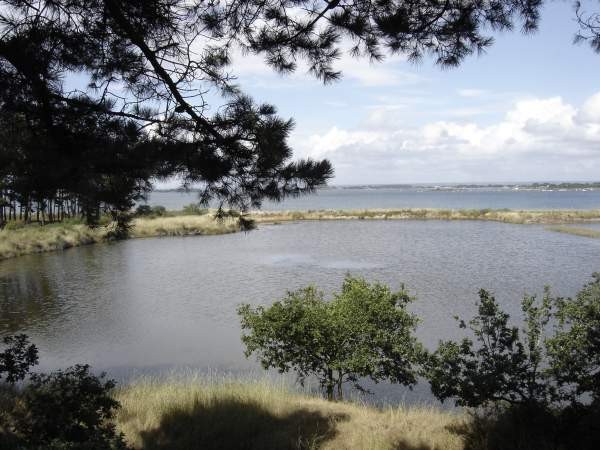Beschreibung
The biotope of the Marais du Duer contributes to the quality of the waters of the Gulf of Morbihan and to its biological richness. It is a peaceful area appreciated by wildlife, especially birds (migratory, wintering or summer visitors). The Duer marsh is home to many nesting species such as Stelzenläufer. In the spring also Säbelschnäbler and Flußseeschwalbe come back from Africa to breed here. During the fall (October and November) and winter, the marsh receives a large quantity of Ringelgans. They are accompanied by various ducks like Pfeifente, Spießente and Löffelente. The shorebirds are numerous, especially Alpenstrandläufer, Kiebitzregenpfeifer and Sandregenpfeifer. Bläßhuhn are irregularly present.
_________________________
Français: Des centaines d’oiseaux hivernent d’octobre à mars, les anciennes salines des marais du Duer sont aujourd’hui, le paradis des oiseaux. Le biotope du marais participe à la qualité des eaux du golfe du Morbihan et à sa richesse biologique. C’est une zone de quiétude appréciée de la faune, en particulier des oiseaux (migrateurs, hivernants ou estivants). Le marais accueille de nombreuses espèces nicheuses comme l'Stelzenläufer . Au printemps reviennent d'Afrique pour nicher Säbelschnäbler , l' Stelzenläufer , la Flußseeschwalbe . Durant l'automne (octobre et novembre) et l'hiver, le marais accueille une grande quantité de Ringelgans . Elles sont accompagnées de divers canards, Pfeifente , Spießente , Löffelente . Les limicoles sont nombreux, surtout le Alpenstrandläufer , le Kiebitzregenpfeifer et le Sandregenpfeifer . Les Bläßhuhn sont irrégulièrement présentes.
Details
Zugang
Take the direction Presqu’île de Rhuys, Sarzeau then take the direction Marais du Duer. GPS coordinates: Lat. 47 542886 Long. 2 734694. Parking at the entrance of the site. The marsh is accessible on foot. Two ornithological observatories and a viewpoint allow you to discover this very interesting site at rising tide, where birds find refuge in the basins.
_________________________
Français: Accessible à pied. Deux observatoires ornithologiques aménagés et un belvédere permettent de découvrir ce site très intéressant à marée montante, où les oiseaux trouvent refuge dans les bassins. Prendre la direction Presqu’île de Rhuys, Sarzeau puis prendre la direction Marais du Duer. Coordonnées GPS : Lat.47 542886 Long. 2 734694. Parking à l'entrée du site.


